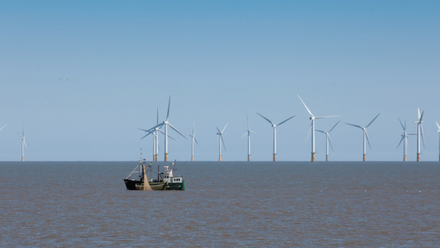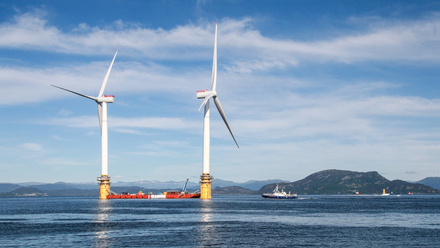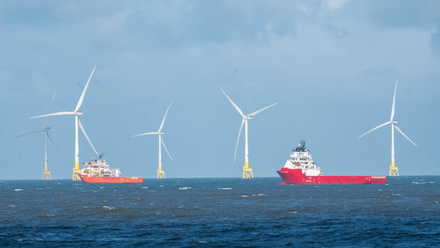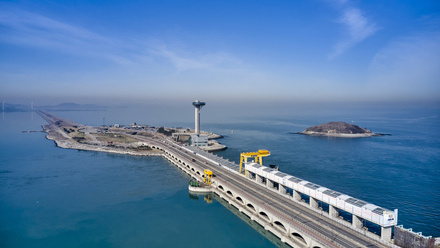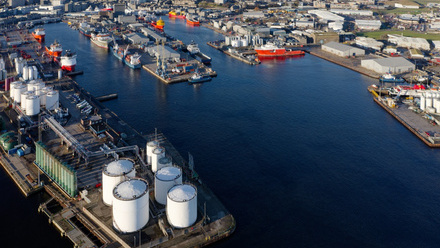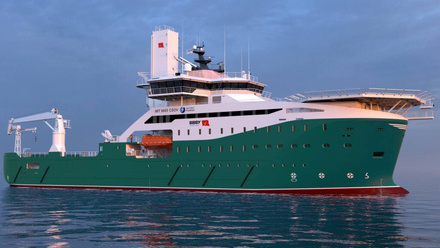Floating wind, solar and aquaculture: China eyes green energy combo
As countries battle to wean themselves off fossil fuels, wind power’s evolution from onshore eyesore to deep-sea powerhouse continues.
Unsurprisingly, just as China’s solar manufacturing industry played a crucial role in accelerating the global deployment of renewable energy, the country is now pushing the envelope on floating wind.
This is still emerging technology, with much yet to be known about the performance, maintenance and life-cycle economics, but it is making headlines because it allows countries with coastlines unsuitable for conventional fixed-bottom offshore wind - typically with water depths of more than 60 metres - to capture the energy flows of the stronger winds offshore.
Last summer the China National Offshore Oil Corporation (CNOOC) connected its Wenchang deep-sea floating wind demonstration project to the grid. It lies near the Wenchang oilfields in the western part of the South China Sea, 136km from shore in a water depth of 120 metres, making it the world's first semi-submersible 'double hundred' deep-sea floating wind project in waters deeper than 100 metres and with an offshore distance of over 100 km.
The 7.25MW deep-sea floating wind power platform supplies power to the offshore oilfield, displacing natural gas and thereby reducing the oil field’s CO2 emissions by 22,000 tons per year.
In addition, China is innovating other ways to find added value through its offshore assets.
At the end of last year, Longyuan Power Group and Shanghai Electric completed the world’s first deep-sea floating wind energy project with integrated marine ranching. The pioneering convergence of wind power, photovoltaics, and aquaculture should help improve economics, enabling growth while still reducing carbon emissions.
Built within the National Marine Ranching Demonstration Zone on Nanri Island, the project features semi-submersible floating platforms, each one supporting a 4MW offshore wind turbine, and lightweight, flexible solar modules and a central hexagonal space for fish farming.
Once operational, the mixed energy project has the capacity to generate 96,000kWh of electricity daily, equivalent to the daily energy consumption of 42,500 individuals.
Wind projects in Europe
It’s not just China pushing ahead with floating wind. With 80 percent of offshore wind potential located in waters deeper than 60 metres, the maximum for fixed turbines, getting the economics right on these giant projects could unlock huge amounts of green power.
According to maritime classification society and advisors DNV, by opening new locations for wind power generation, floating offshore wind will play a critical role in the transition to a cleaner energy supply.
Indeed, the Norwegian group’s 2023 Energy Transition Outlook forecasts that floating offshore wind capacity will reach almost 270GW by 2050 with the global average levelised cost of energy (LCOE) for floating offshore wind falling to $67 per MWh.
Europe has four small floating wind farms today with a combined capacity of 176W but there’s a 250MW plant tendering off northern France, with results due this year, and a number of floating wind auctions planned in the Mediterranean, UK and Norway.
These plans should take Europe’s floating wind capacity to 3-4GW by 2030 although to become climate-neutral by 2050, Europe needs that to reach 150GW.
Last year the EU’s COREWIND project announced they had achieved a cost reduction between 11 percent and 18 percent for floating offshore wind technologies by optimising design for two floating sub-structures by sharing anchors and mooring lines, analysing different cable system configuration options and optimising operations & maintenance strategies.
Lessons are being learned all the time; now it’s time to unlock the funding and ensure the underlying pricing and policies deliver to get these floating assets built in a meaningful timescale.
Main image: Deep-sea floating wind project in the National Marine Ranching Demonstration Zone on Nanri Island, China; credit: Shanghai Electric
Learn more about this topic by joining IMarEST’s Offshore Renewables Special Interest Group.

